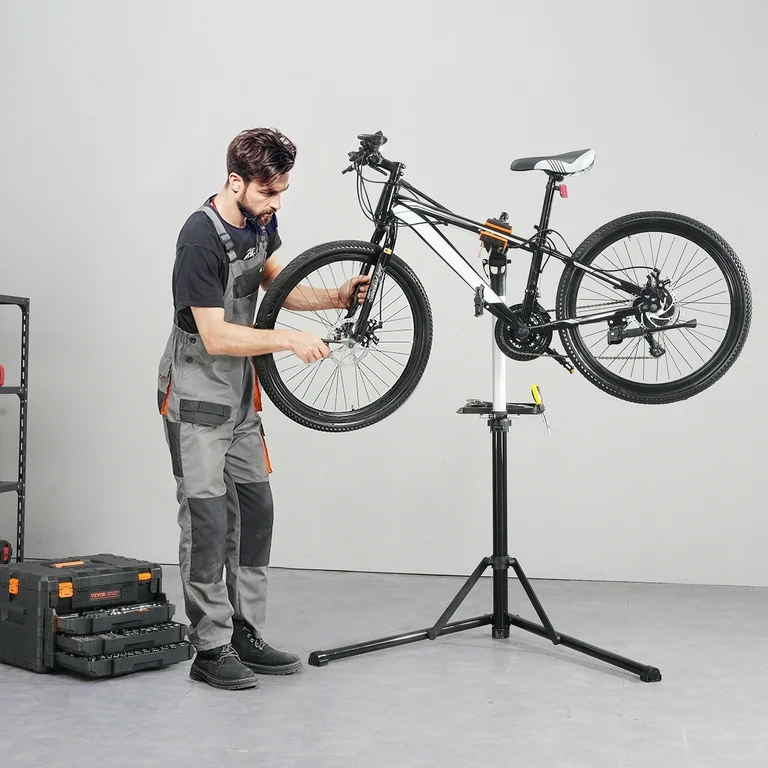A bike rack is an essential tool for any cyclist who wants to transport their bike with ease, whether for commuting, traveling, or cycling adventures. As with any piece of equipment, regular care and maintenance are crucial to ensure that your bike rack continues to perform at its best, year after year. Proper maintenance not only prolongs the life of your bike rack but also ensures that your bike stays secure during transport.
In this article, we’ll cover essential tips for taking care of your bike rack, from cleaning and lubricating to checking for wear and tear. By following these simple maintenance steps, you can keep your bike rack in top shape, ensuring a smooth and safe ride every time.

Regular Cleaning: Protecting Your Bike Rack from the Elements
The first step in maintaining your bike rack is keeping it clean. Like any outdoor gear, bike racks are exposed to the elements, including rain, dirt, road salt, and UV rays, which can cause wear over time. Regular cleaning not only keeps your bike rack looking good, but it also prevents dirt and grime from causing damage to the materials, reducing rust and corrosion.
How to Clean Your Bike Rack
- Use Mild Soap and Water:
Most bike racks can be cleaned with a mild soap solution and warm water. Avoid harsh chemicals that could damage the paint or coatings on the rack. Simply mix a small amount of dish soap with water and use a sponge or soft cloth to wipe down the rack. - Clean the Straps and Mounting Points:
Pay special attention to the straps, mounting points, and areas that come into contact with your bike. These parts often accumulate grease, dirt, and dust, which could interfere with the performance of the rack. Gently scrub these areas to remove any buildup. - Rinse and Dry:
After washing the rack, rinse it with clean water to remove any soap residue. Make sure to dry the bike rack thoroughly with a clean, dry cloth to prevent water spots and reduce the risk of rust. - Clean the Tires and Wheels:
If you’re cleaning a roof rack, hitch rack, or any rack that comes in contact with your bike’s tires, take a moment to clean the tires and wheels as well. This helps remove any dirt or debris that could transfer to the rack and cause damage over time.

When to Clean Your Bike Rack
It’s a good idea to clean your bike rack every few weeks or after long trips. However, if you live in a particularly dusty or wet area, you may need to clean the rack more frequently. After winter months, be sure to give your bike rack a good cleaning to remove any road salt that could cause rust.
Lubrication: Ensuring Smooth Operation
Another key aspect of bike rack maintenance is lubrication. Many racks have moving parts, such as hinges, arms, or locking mechanisms, that require proper lubrication to keep them functioning smoothly. Lack of lubrication can cause these parts to seize up, wear out prematurely, or become difficult to operate.
Which Parts to Lubricate
- Hinges and Moving Components:
If your bike rack has hinges, arms that fold down, or any other moving parts, make sure to lubricate these areas regularly. Use a lubricant specifically designed for outdoor equipment, such as silicone spray or a multi-purpose lubricant that is safe for metal surfaces. - Locking Mechanisms and Straps:
Some racks come with locking mechanisms to secure your bike or the rack itself to the car. Apply a small amount of lubricant to these areas to ensure they function properly. For racks with straps, consider using a bit of lubricant on the metal components where the straps are threaded to prevent them from sticking. - Wheel Mounts and Clamps:
The parts of the rack that hold the bike’s wheels or frame are subject to wear over time, especially if they are constantly tightened and loosened. Lubricating these components can prevent friction and ensure that the bike is held securely without causing damage.
How to Lubricate
- Use the Right Lubricant:
Opt for a lubricant that is suitable for outdoor conditions and won’t attract dirt. Silicone spray is a good option because it’s water-resistant and won’t leave a sticky residue. Apply the lubricant sparingly to avoid attracting dirt or dust. - Apply Lubricant to Moving Parts:
Spray the lubricant onto the hinges, locks, and any parts that move. Operate these parts a few times to allow the lubricant to spread evenly. - Wipe Off Excess:
After applying lubricant, wipe away any excess with a clean cloth to prevent dirt from sticking to the rack.
How Often to Lubricate
Lubrication should be done every few months or after any extended trip. If you notice that the moving parts are becoming harder to operate, it’s a sign that more lubrication is needed.
Inspect for Wear and Tear: Keeping Your Rack Safe
Over time, your bike rack will experience wear and tear from regular use. Checking for damage or wear is crucial to maintaining the safety and functionality of your rack. By performing regular inspections, you can identify issues early on and avoid potential problems that could compromise the safety of your bike during transport.
Key Areas to Inspect
- Check for Cracks or Fractures:
Inspect the frame of the bike rack for any visible cracks or fractures. While bike racks are built to last, repeated use and exposure to the elements can cause material fatigue. Look for any signs of damage, especially around high-stress points such as the mounting arms or hitch receiver. - Examine Straps and Mounting Components:
Make sure the straps and mounting components are intact. Over time, straps can stretch or become frayed, compromising their ability to secure the bike. If you notice any damage to the straps, replace them immediately to avoid losing control of the bike during transport. - Inspect the Wheels and Tires:
If your rack has wheel cradles or bike tires are in contact with the rack, inspect these areas for wear. Check that the cradles are holding the bike securely and that the tires are properly secured in place. - Check the Locking Mechanism:
If your rack uses locks to secure the bikes, make sure the locks are functioning properly. Check for rust or damage to the lock cylinders and ensure that the keys or codes are working. - Examine the Hitch and Receiver:
For hitch-mounted racks, regularly check the hitch and receiver to ensure that they are free from rust or corrosion. Lubricate the hitch pin or locking mechanism to prevent it from seizing up.
When to Replace Parts
If any parts of your bike rack show signs of serious wear, such as cracked or broken components, it’s important to replace them as soon as possible. Do not use the bike rack if you notice any parts that are severely damaged, as it could compromise the security of your bike during transport.
Protecting Your Bike Rack from the Elements
One of the most important aspects of maintaining your bike rack is protecting it from environmental elements. Exposure to the sun, rain, saltwater, and snow can all cause damage to your bike rack over time, leading to rust, corrosion, and general wear. Here are some tips to protect your bike rack from the elements:
Store the Rack Properly
When not in use, store your bike rack in a cool, dry place, preferably in a garage or shed. This will help protect it from exposure to rain, snow, and the harsh rays of the sun. If you don’t have a garage, consider using a bike rack cover to protect it from the elements.
Use a Bike Rack Cover
If your bike rack is left outside, investing in a weather-resistant cover is a smart way to protect it. A cover will shield the rack from rain, snow, and dirt, keeping it clean and dry when not in use.
Avoid Salt Exposure
If you live in an area where salt is used on the roads during winter, make sure to clean your bike rack thoroughly after every trip. Salt can cause rust and corrosion, particularly on metal components. Rinse your rack with fresh water after each winter trip to remove any salt buildup.

Conclusion
A well-maintained bike rack will provide years of reliable service, keeping your bike safe and secure during transport. By following these simple maintenance tips—regular cleaning, lubrication, inspections, and proper storage—you can ensure that your bike rack remains in top condition for many seasons to come.
A small investment in maintenance now will save you from costly repairs or replacements in the future. So, take care of your bike rack, and it will continue to serve you, safely transporting your bike on every journey, no matter where the road takes you.
